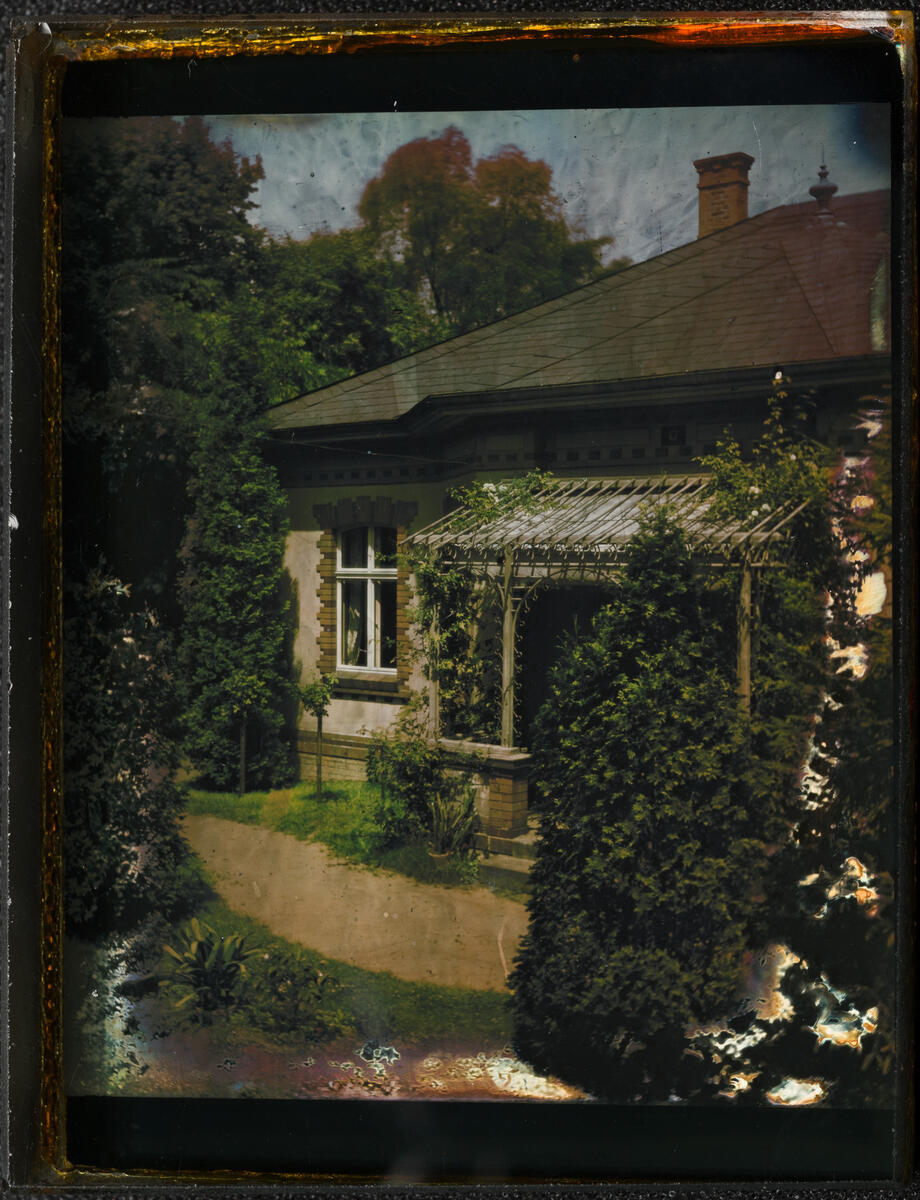Slow Color Photography - Summary
Slow Color Photography explores the remarkable science, art, and aesthetics of two of the German Empire's most ambitious photographers who created color images ca. 1900: Doctor of medicine and anthropologist Richard Neuhauss (1855-1915) and physicist Hans Lehmann (1875-1917).
They used a color technology called "interferential photography" which Luxembourgian-French physicist Gabriel Lippmann (1845-1921) first presented to the Academy of Science in Paris in 1891. Although Lippmann won the Nobel Prize in Physics in 1908, the interest in his work subsequently waned. This exhibition at Preus Museum is the first to celebrate the centenary of his death by focusing on his reception outside of France.
Richard Gustav Neuhauss (1855-1915). Textile close-up I [no original title]. Lippmann process aka interferential color photography. Size of object: 119 mm x 90 mm. Glass plate with wedge prism at 10 degree angle. Undated. Albert Narath Collection. Preus Museum. (photo: Jens Gold/Preus Museum)
Visitors saw interferential images a century ago in museum exhibitions similar to this one. They compared them to "diamonds" and "jewels" thanks to their beauty, their use of transparent glass (and not paper), and the complex laboratory skills and knowledge of physics and chemistry needed to produce them. Nowadays, visually enjoying Neuhauss and Lehmann's "jewels" is still an experience like no other, allowing you to feel just how slow an image can be: Their brilliant colors will only reveal themselves to you from a certain angle. Their shades are shy and cannot be seen in a split second. At times, the glass becomes a mirror reflecting your own image back at you. In the entire world, there are less 500 interferential photographs.
Hans Lehmann (1875 – 1917). Still life. [no original title]. Lippmann process aka interferential color photography. 120 mm x 89 mm. Glass plate with wedge prism at 10 degree angle. 1908. Albert Narath Collection. Preus Museum.
(Photo: Ana Gonçalves/Preus Museum).
The museum's founder and color enthusiast Leif Preus (1928-2013) hand-picked these rarities and made sure they ended up in his beloved hometown Horten, Norway, along with the entire "Albert Narath collection" to which they belong. By reconnecting with his fascination for color, technology and science, Slow Color Photography is also an invitation to reflect on the exclusion of interferential photography from the "general" history of the medium.

